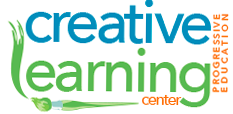Why is it important for children to be involved in the arts?
Art, music, drama, and dance are some of the best ways to promote literacy and brain development in early childhood education. The right hemisphere of our brain is activated when we participate in creative and intuitive activities. Arts offer young children open-ended playful types of activities with an emphasis on “hands-on” active learning. While engaged in art experiences, all the domains of learning are being developed, from cognitive to social-emotional to fine motor and multi-sensory skills.
Watch a young child as she mixes primary colors and creates a “magical” secondary color and you will see total immersion and joy! The child who is encouraged to imagine, create, and express herself through art is given a gift, one that leads to greater self-confidence and self-esteem. When art experiences are integrated with an ongoing theme, the child makes meaningful connections through the art. For example, when studying ocean life and reading The Rainbow Fish in our preschool classes, the children were asked to create their own imaginary fish from a multitude of open-ended materials such as paper, wallpaper, corrugated cardboard, pipe cleaners, ribbon, and so forth. The children were engaged in critical thinking as they worked cooperatively to transform their ideas into a two-dimensional project. Following the creation of their fish, they were asked to paint an ocean scene and represent what they had learned about ocean life through their classroom studies.
Here’s a fun art project that we love to do with our students. It is very open-ended and encourages creative expression. We call it “Fluffy Goop” and it makes a quick and inexpensive art medium with an enjoyable texture.
How to make Fluffy Goop
1. Have an adult pour about 1/2 cup white glue into a small bowl.
2. Let your child add shaving cream on top until it mounds slightly.
3. Encourage your child to mix it up by whipping the glue and shaving cream with a spoon until it’s smooth and thick.
4. If you like, your child may add food coloring or powdered paint to add color to the mixture.
5. The fun begins when your child spoons the goop onto paper or cardboard and spreads it around with a brush or fingers.
6. Your child may want to add sequins, beads, feathers, or other items to the mixture.
Think of all the skills your child will develop through this activity! Measurement, sequencing, sensory skills, eye-hand coordination, self-expression, new vocabulary, and listening skills are just a few! Most importantly, your child will experience the joy of creativity and the satisfaction of mastery.
Do you know the difference between “arts” and “crafts’?

